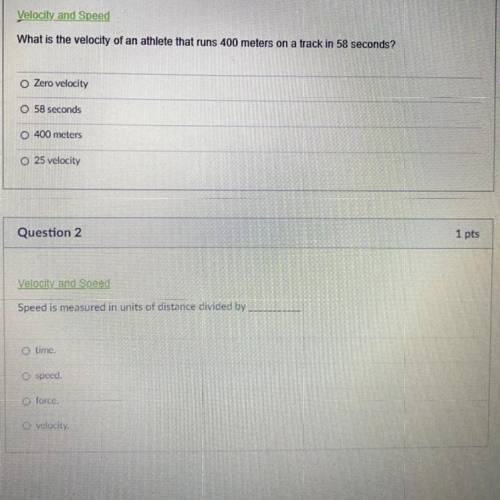
Answers: 2
Another question on Physics

Physics, 21.06.2019 20:20
Copper has free electrons per cubic meter. a 71.0-cm length of 12-gauge copper wire that is 2.05 mm in diameter carries 4.85 a of current. (a) how much time does it take for an electron to travel the length of the wire? (b) repeat part (a) for 6-gauge copper wire (diameter 4.12 mm) of the same length that carries the same current. (c) generally speaking, how does changing the diameter of a wire that carries a given amount of current affect the drift velocity of the electrons in the wire?
Answers: 2

Physics, 22.06.2019 07:10
Search coils and credit cards. one practical way to measure magnetic field strength uses a small, closely wound coil called a search coil. the coil is initially held with its plane perpendicular to a magnetic field. the coil is then either quickly rotated a quarter-turn about a diameter or quickly pulled out of the field. (a) derive the equation relating the total charge q that flows through a search coil to the magnetic-field magnitude b. the search coil has n turns, each with area a, and the flux through the coil is decreased from its initial maximum value to zero in a time ∆t. the resistance of the coil is r, and the total charge is q = i∆t, where i is the average current induced by the change in flux. (b) in a credit card reader, the magnetic strip on the back of a credit card is rapidly “swiped” past a coil within the reader. explain, using the same ideas that underlie the operation of a search coil, how the reader can decode the information stored in the pattern of magnetization on the strip. (c) is it necessary that the credit card be “swiped” through the reader at exactly the right speed? why or why not?
Answers: 2

Physics, 22.06.2019 08:30
If an astronaut takes an object to the moon the following is true (choose only one). a the mass will change but the weight will be the same. b both the mass and the weight of the object will be the same. c the weight will change but the mass will be the same. d both the mass and the weight of the object will change.
Answers: 1

Physics, 22.06.2019 19:00
The particle p starts from rest at point a at time t = 0 and changes its speed thereafter at a constant rate of 2.8g as it follows the horizontal path shown. determine the magnitude and direction of its total acceleration (a) just before point b, (b) just after point b, and (c) as it passes point c. state your directions relative to the x-axis shown (ccw positive) and choose the angle with the smallest magnitude.
Answers: 1
You know the right answer?
Help immediately please
...
...
Questions

Mathematics, 21.04.2021 22:10


Spanish, 21.04.2021 22:10



Mathematics, 21.04.2021 22:10



English, 21.04.2021 22:10

Chemistry, 21.04.2021 22:10



Biology, 21.04.2021 22:10


Spanish, 21.04.2021 22:10



Mathematics, 21.04.2021 22:10

Spanish, 21.04.2021 22:10

English, 21.04.2021 22:10




